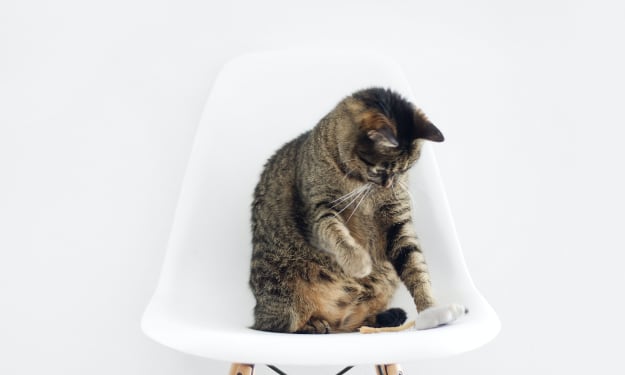Little Fires Everywhere Review
Comparing the show to the book

I was a Celest Nge fan before Reese Witherspoon made Nge's Little Fires Everywhere a household name (I ugly cried through her first book). However, I've been a Reese fan since Cruel Intentions so the collaboration made me sign up for Hulu. No kidding.
I know, popular thought is always "the book was better" but, I prefer to treat the two mediums separately when a book moves to the screen. In the case of Little Fires Everywhere, though, it's almost like the two only share characters and a vague plot. Here's my take on how, together, book and screen meld into one perfect, or one perfectly awful, story.
WARNING: contains spoilers.
Where the show got it wrong:
1. Shifting Izzy's core storyline away from bullying and towards teenage rebellion. Through both mediums, Izzy's moral compass points true north. However, this is more clearly displayed in the book when she stands up against an authority figure, a teacher, bullying a fellow student. The show downplays her passion for what's humanly right into a teenager who appears to just want to rebel against her mother. In our current age of Trump and social media-associated suicide rates, a call to stand up against bullying is important now more than ever. Bullying against women, racism, sexual preferences, etc. By not incorporating this powerful message and virtue, especially from the youngest character in the book, the show did a disservice to today's audience. Yes, the plot is in the 90s, but the message is so urgent for what's happening right now and so aligned with the political movement we're seeing in current youth.
2. The relationship between Mia and her professor. This one really threw me for a loop. Pauline takes advantage of her student. Male or female, this relationship, as depicted in the television show, is too ripe with sexual predator trouble. In the book, the relationship keeps with one of the overarching plot themes: that of family and motherhood. Mia misses out on support from her mother and makes life-decisions based on whether her mother will judge her or not, whereas Pauline just accepts and encourages Mia. It is not sexual; it is mentorship verging on familial. It is Mia consistently finding people in her life to fill a void left by her mother - one of emotional support and encouragement.
3. The house fire. I just couldn't. It is unbelievable that the Richards kids have a two-second complete change of character and set fire to their house while their mother is still in it! Try as I might, I cannot buy into any of these arcs for any of the children. I could easier buy into Mia burning down the damn house. Also frustrating, the show steals, again, from Izzy's strength as a powerful youth ready to, for lack of a better phrase, set fire to the world for change. In the book, you know immediately who the arsonist is and you spend the rest of the book wondering what prompts a teenager to do such a thing.
Where the show got it right:
1. There's more to being a mother than genetics. I don't like the book's message, as told through Mia and the Bebe Chow legal case with Mrs. McCullough, that what makes a mother is purely genes. It's not an accurate reflection of motherhood. Plenty of natural mothers struggle to bond to their children and plenty of adopted mothers know their child the moment they lay eyes on them. Alternatively, the show is careful to not send a message that adoption is an inferior path to motherhood. Rather they make the legal case more about class while highlighting a true disservice that new single-moms, especially non-white new single-moms, deal with in terms of postpartum depression. Also, the show addresses the more likely motherhood scenario, which is that a mother can have a strained, broken relationship with her natural child but feel a bond with another child more like them in terms of character and values.
2. Making Elena more human. Book Elena is practically a robot. From her formal name to her cold encounters with everyone, she is really hard to identify with, despite her backstory explained. Reese brings dimensions to Elena. You see Elena's flaws and strengths; you feel her pressures and you cringe at her choices. You can mesh screen-Elena with book-Mia to get true friction between two women who are struggling to make sense of all their roles. That feels like real life.
3. Lexie and Mia after Lexie's abortion. The book makes it seem like Lexie and Mia turn a corner in their relationship after Lexie's abortion, which is fine in the world of fiction. More likely is the show's version of fiction: that Lexie momentarily sought the comfort of a practical stranger she knew she'd never encounter again to get her through a moment of crisis, only to return to life as she knows it. Screen-Lexie has some inner change but the change does not include thinking Mia will play a bigger role in her life. Mia serves her purpose, begrudgingly at that, and they both swiftly move on because ultimately they know they are too different to bond.
Both book and screen have merits and flaws. You could combine them to get the best or worst story, depending on your take. However, it's always fascinating to see what works visually and what works better in the reader's imagination.
About the Creator
Robyn Russo
Robyn ponders life and writes about it from Austin, TX. When you can't find her, she’s probably holed away with a great book and a bottle of wine. She’ll resurface when done.






Comments
There are no comments for this story
Be the first to respond and start the conversation.